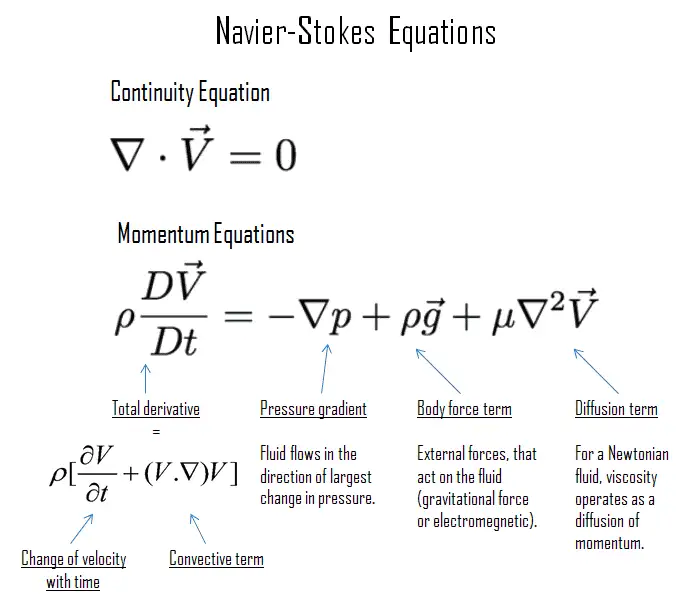
Extremely complicated subjects that we do not have answers for, we only posit the questions.
Fluid dynamics is the study of the movement of fluids and the forces that act on them. It is a branch of physics that deals with liquids, gases, and plasmas and how they respond to forces such as gravity, pressure, and temperature. The history of fluid dynamics can be traced back to the ancient Greeks, who made observations about the flow of water in rivers and the behavior of fluids in containers. However, it was not until the 17th and 18th centuries that scientists such as Galileo, Newton, and Bernoulli began to formulate mathematical descriptions of fluid behavior.
One of the key problems that fluid dynamics addresses is the prediction and control of fluid flow. Fluid flow is a fundamental aspect of many natural and man-made systems, such as rivers, oceans, weather systems, and industrial processes. Understanding fluid flow is essential for the design of efficient and safe systems, such as aircraft, ships, and power plants.
There are different types of fluid and different types of flow. The two main types of fluid are liquids and gases, each of which behaves differently. For example, liquids are relatively incompressible, meaning their volume does not change much under pressure, while gases are highly compressible, meaning their volume changes a lot under pressure. The two main types of flow are laminar flow and turbulent flow. Laminar flow is characterized by smooth, orderly movement of fluid particles, while turbulent flow is characterized by chaotic, irregular movement.
The Reynolds number is a dimensionless number that plays a crucial role in fluid dynamics. It is used to determine the nature of fluid flow, whether it is laminar or turbulent, and helps to predict how a fluid will behave in different conditions. The Reynolds number is determined by the ratio of inertial forces to viscous forces in a fluid. When the Reynolds number is low, the fluid flow is laminar, when the Reynolds number is high, the fluid flow is turbulent.
Studying fluid dynamics can provide valuable insight into many areas of science and engineering. For example, in the field of meteorology, fluid dynamics is used to understand and predict weather patterns. In the field of aerospace engineering, fluid dynamics is used to design efficient and safe aircraft. In the field of civil engineering, fluid dynamics is used to design safe and efficient water and sewage systems. In the field of mechanical engineering, fluid dynamics is used to design efficient and safe power plants.
There’s alot of reasons to take a nice close look at fluid dynamics.